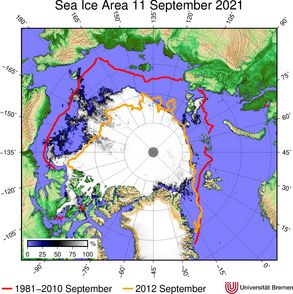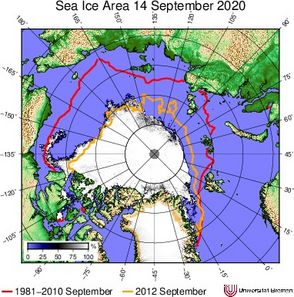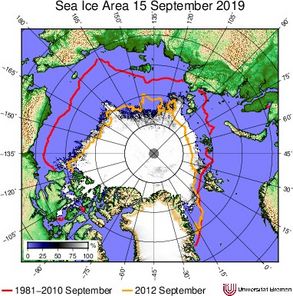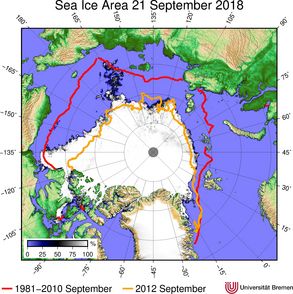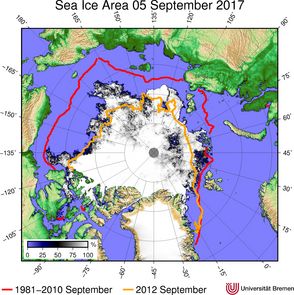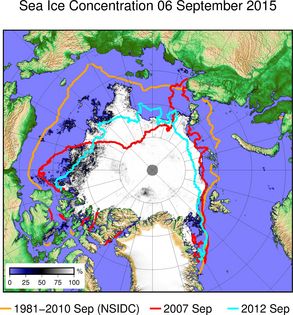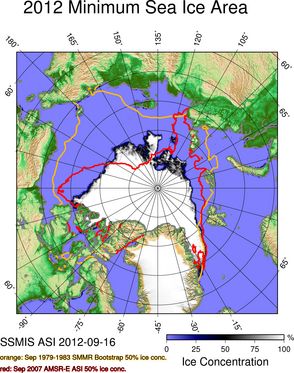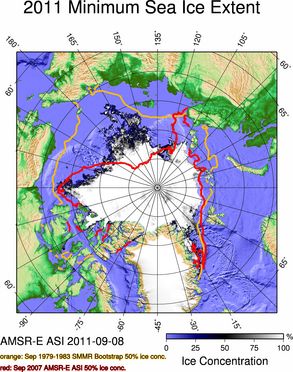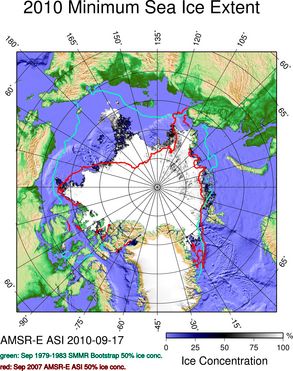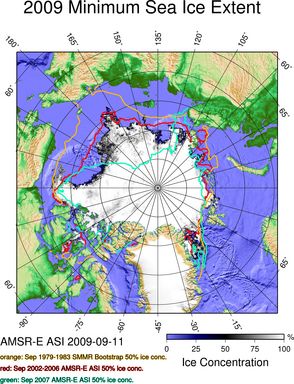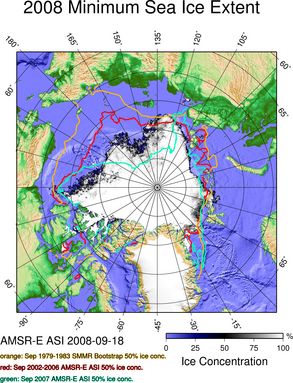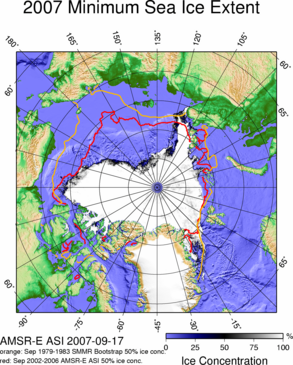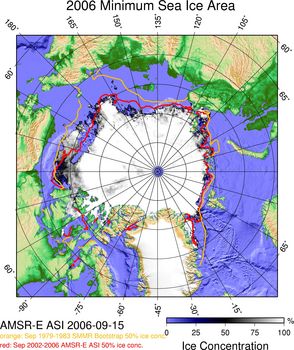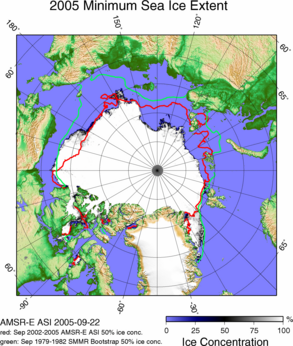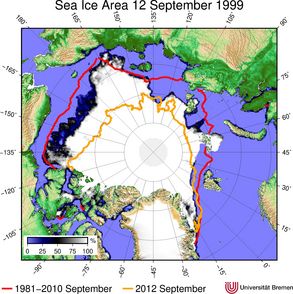
Sea Ice Minimum and Maximum in the Arctic
The extent of sea ice in the Arctic shows a strong seasonal cycle: in March the sea ice area reaches its largest and in September its smallest extent. During recent years the sea ice extent has reduced significantly compared to the long-term median of the 20 years 1981 to 2010.
In September 2021 the twelfth lowest sea ice extend in the satellite record was observed. The 2021 September ice extend was high compared to the last years but still much lower than the long-term average.
Arctic Sea Ice Minima
Data archive, citation and contact
Data archive
All data can be found in the Data Archive. To quickly browse the dataset, please have a look at the Data Browser.
How to cite
Please help maintaining this service by properly citing and acknowledging if you use the data for publications:
Spreen, G., L. Kaleschke, and G.Heygster (2008), Sea ice remote sensing using AMSR-E 89 GHz channels J. Geophys. Res.,vol. 113, C02S03, doi:10.1029/2005JC003384.
The data from years 2002-2018 are also available at the data publisher PANGAEA, one data set each for Arctic and Antarctic, AMSR-E-based and AMSR2-based:
Melsheimer, Christian, Spreen, Gunnar (2020): AMSR-E ASI sea ice concentration data, Arctic, version 5.4 (NetCDF) (June 2002 - September 2011). PANGAEA, https://doi.pangaea.de/10.1594/PANGAEA.919777
Melsheimer, Christian; Spreen, Gunnar (2020): AMSR-E ASI sea ice concentration data, Antarctic, version 5.4 (NetCDF) (June 2002 - September 2011). PANGAEA, https://doi.pangaea.de/10.1594/PANGAEA.919778
Melsheimer, Christian; Spreen, Gunnar (2019): AMSR2 ASI sea ice concentration data, Arctic, version 5.4 (NetCDF) (July 2012 - December 2018). PANGAEA, https://doi.org/10.1594/PANGAEA.898399
Melsheimer, Christian; Spreen, Gunnar (2019): AMSR2 ASI sea ice concentration data, Antarctic, version 5.4 (NetCDF) (July 2012 - December 2018). PANGAEA, https://doi.org/10.1594/PANGAEA.898400
Contact
For questions regarding the data please contact Gunnar Spreen or Christian Melsheimer
Institute of Environmental Physics, University of Bremen, Germany.



 Start
Start
